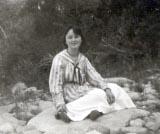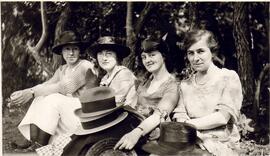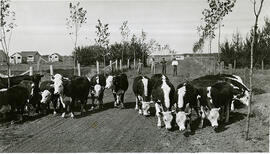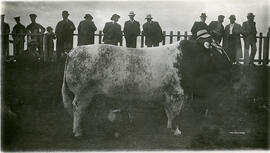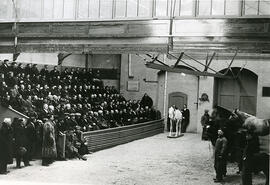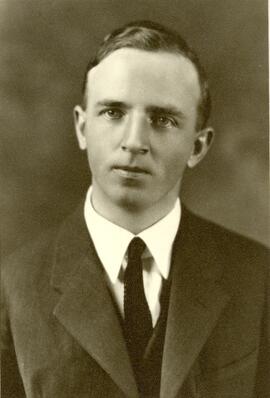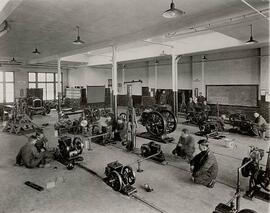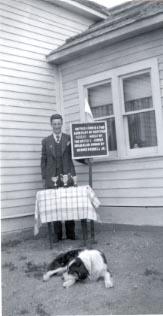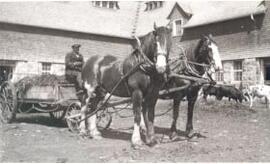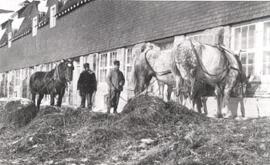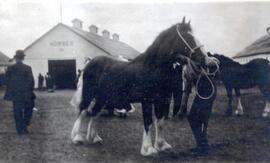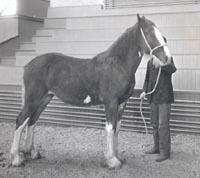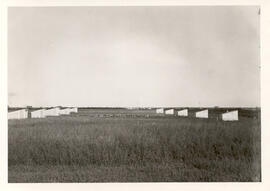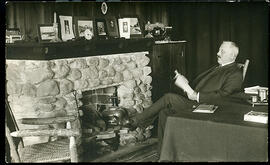- A-5697
- Item
- [192-?]
Lucy Murray seated on some rocks; trees in background.
Bio/Historical Note: Born in 1902 in Nova Scotia, Lucy Hunter Murray was the second daughter of Walter C. Murray, the University of Saskatchewan's first president, and Christina Cameron Murray. Lucy Murray received her BA at the University of Saskatchewan in 1923 and her MA from the University of Toronto in 1925. Then followed a B.Ed. degree in 1933 at the University of Saskatchewan where she received the McColl scholarship in 1933. Murray earned a Ph.D. at the University of Chicago in 1935. She joined the Regina College's department of English in 1936 and was an Associate Professor there at the time of her death in 1967. Murray was given the Cliff Shaw Memorial Award for her contributions to the Blue Jay, the journal of the Saskatchewan Natural History Society.

